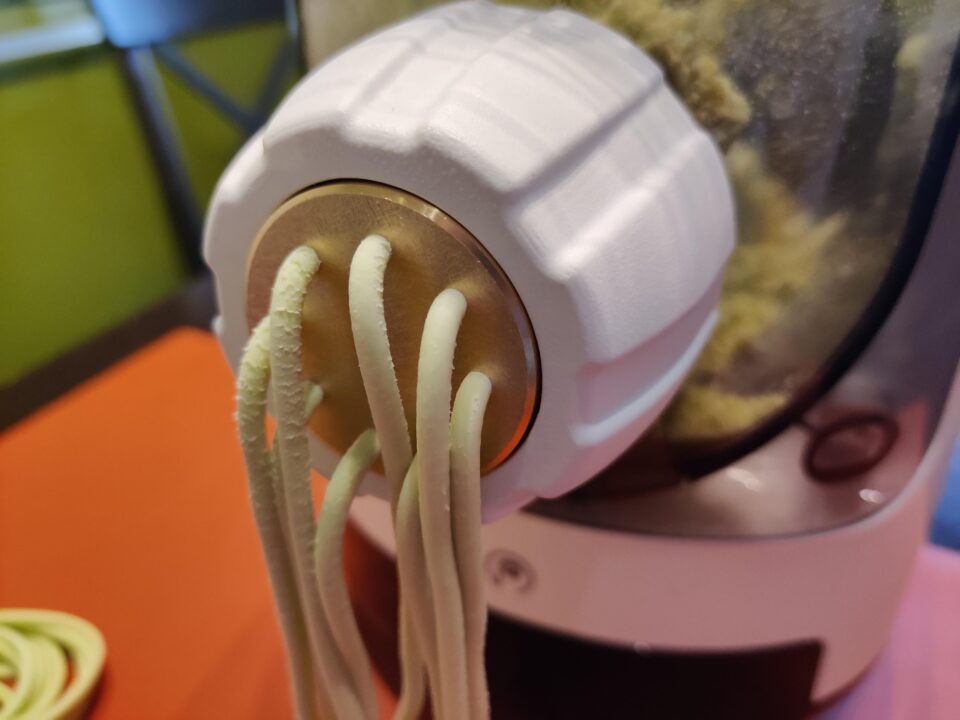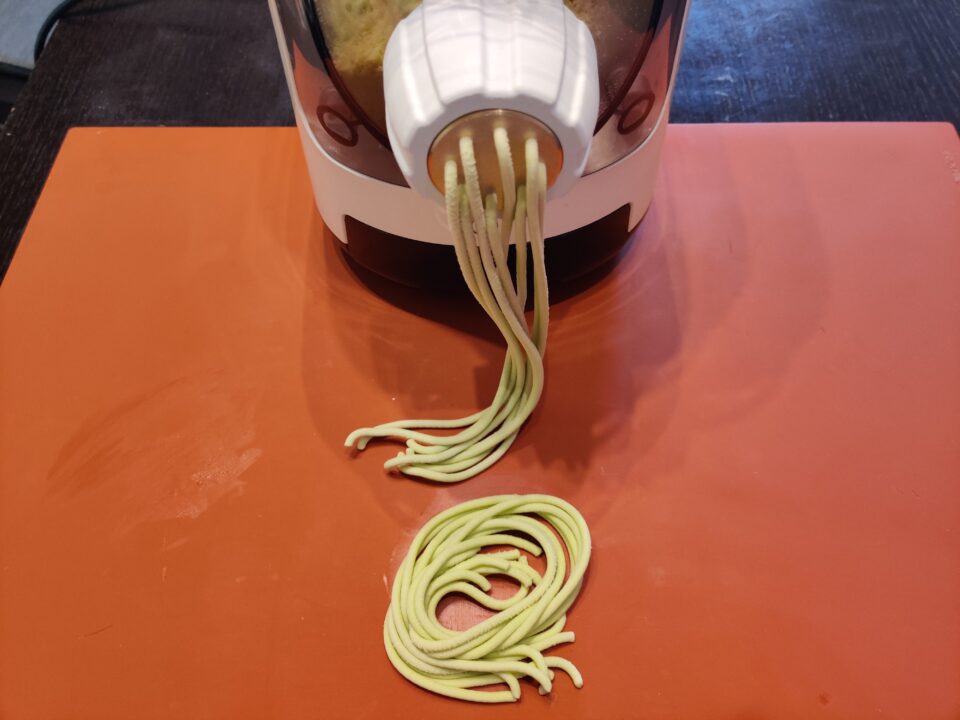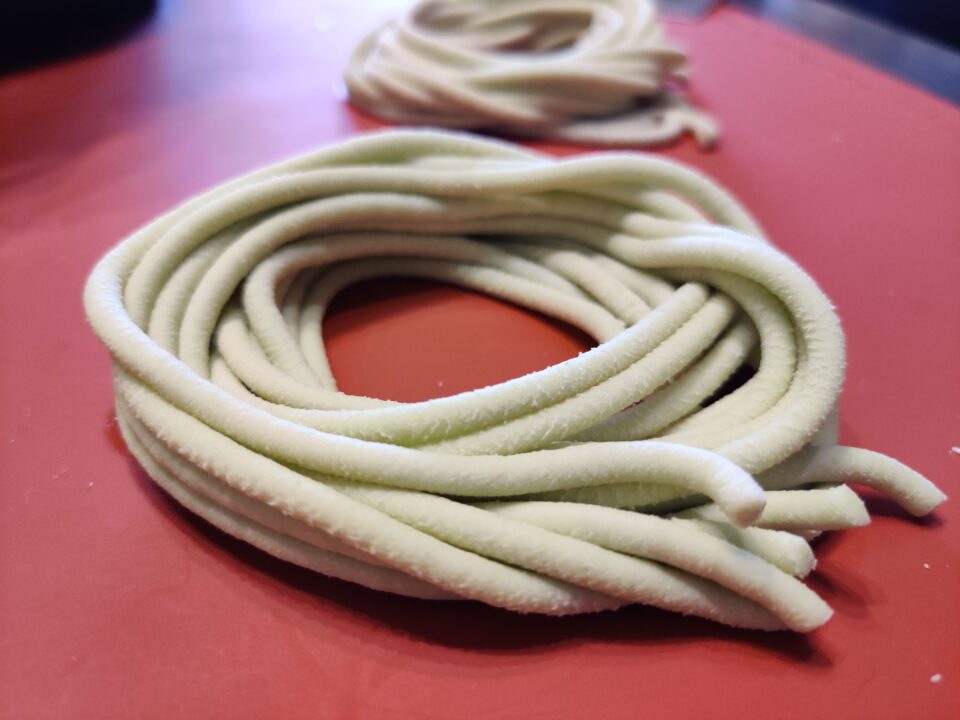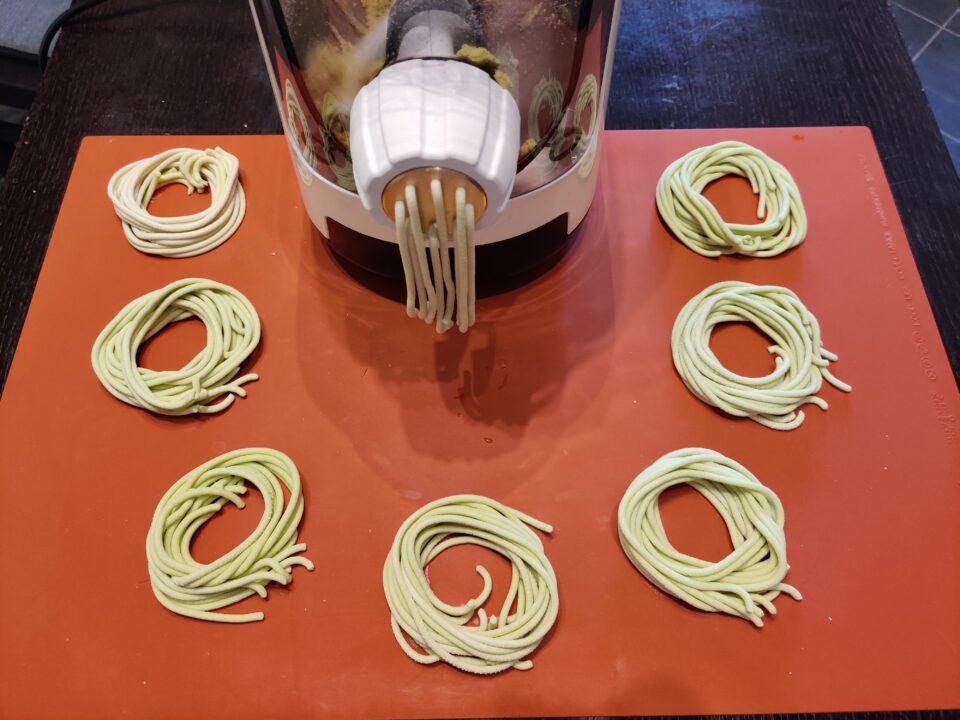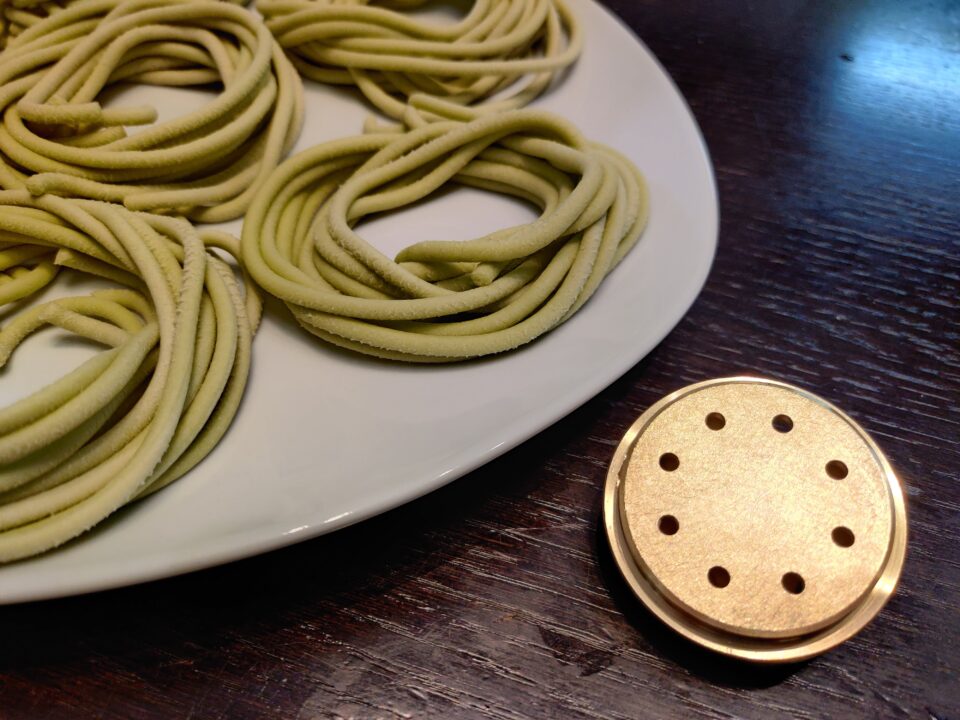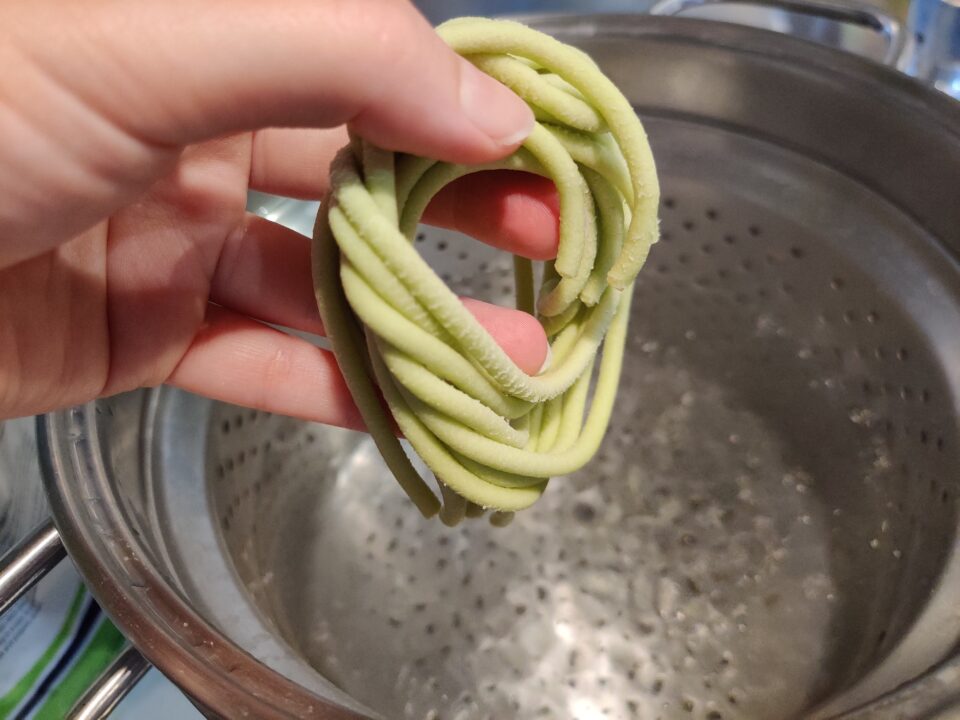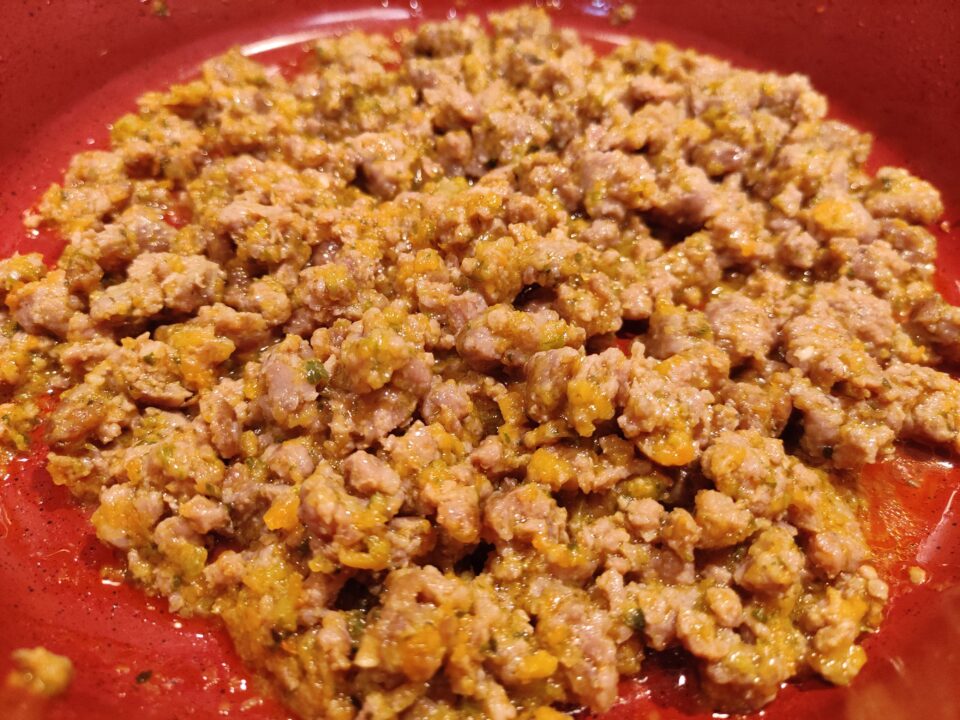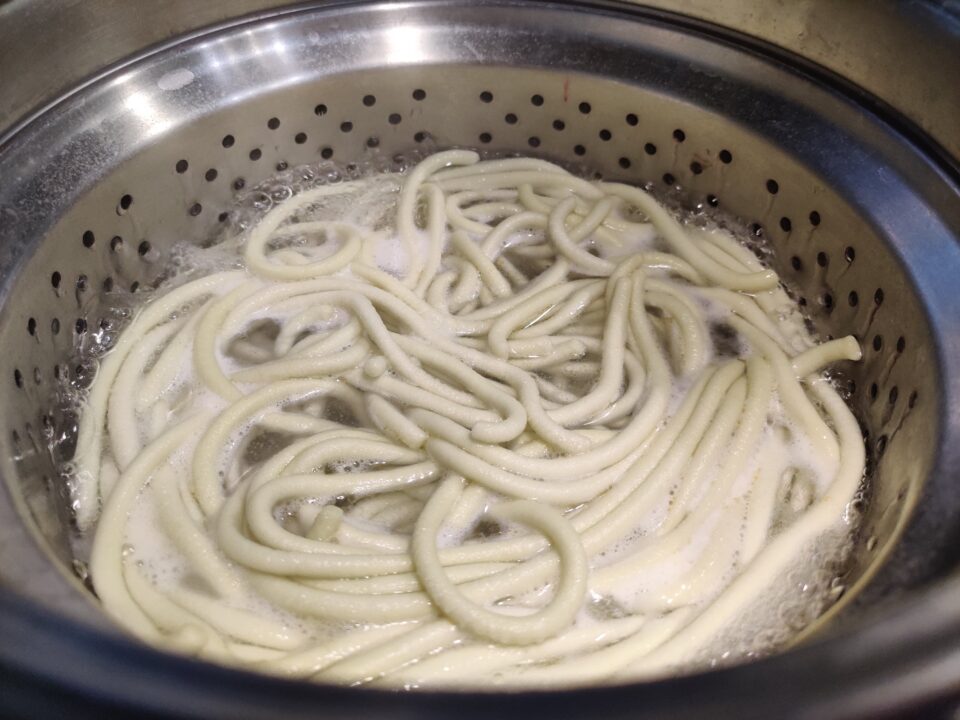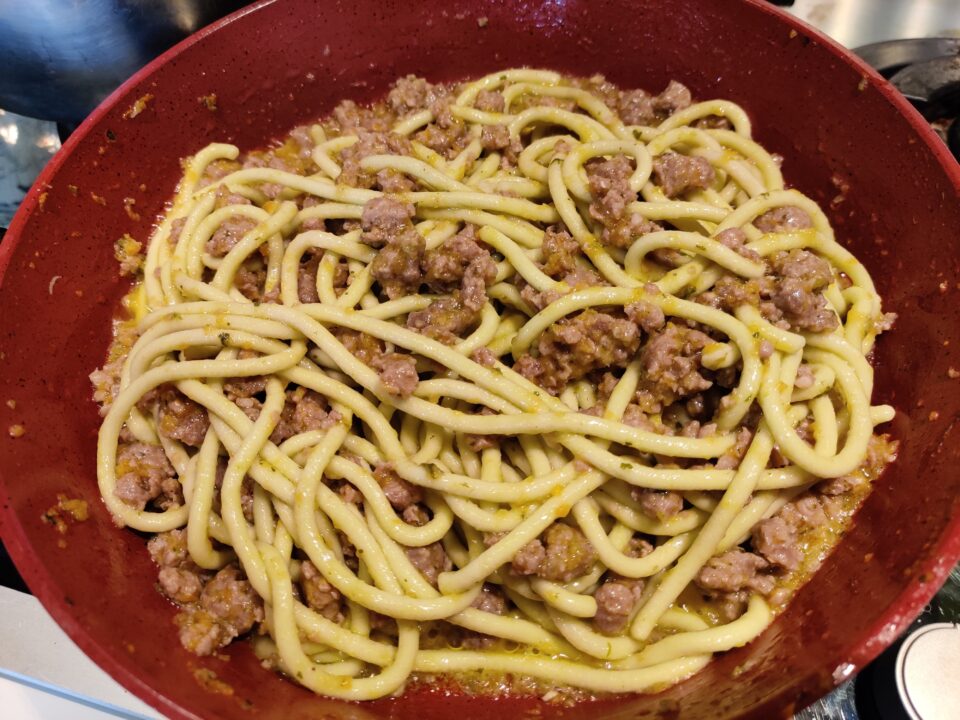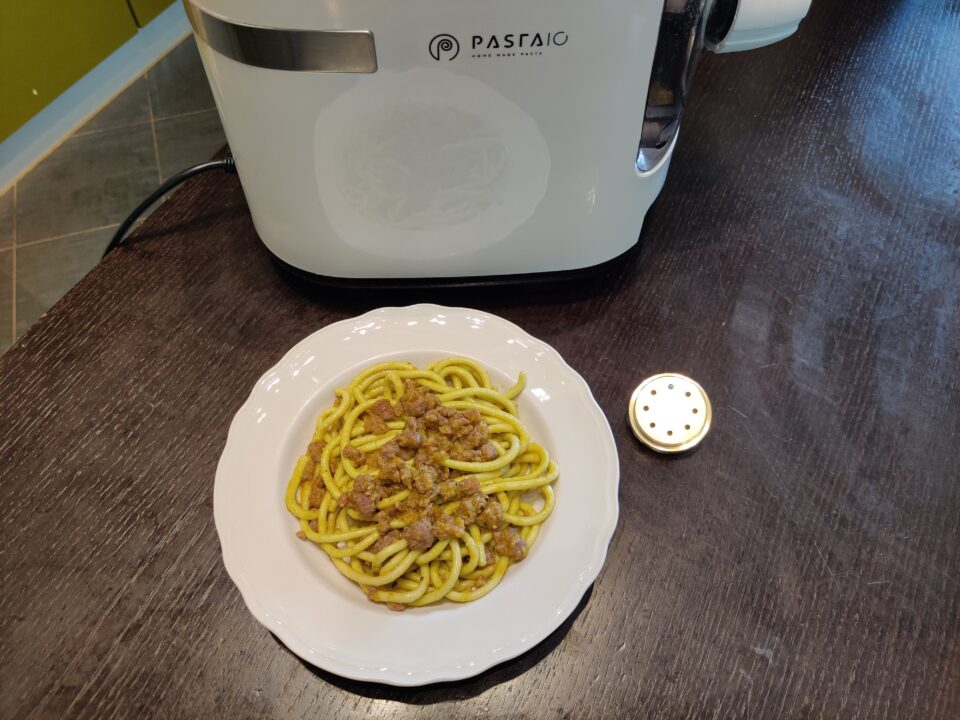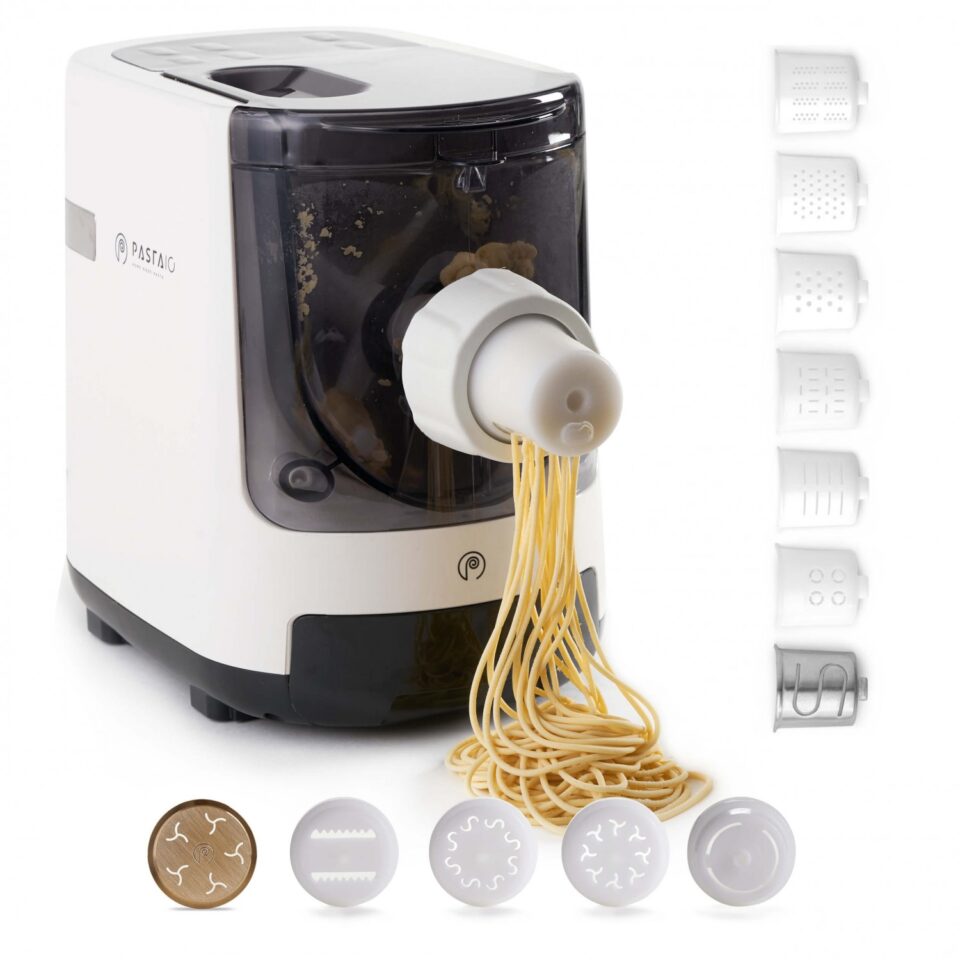Peas pici with white sausage ragout. Pici are a typical Tuscany pasta, similar to very thick spaghetti and I have tasted them several times during my travels to Tuscany, seasoned with the legendary Cinta Senese (kind of local pig) ragout. In this case I wanted to combine some different traditions, in fact in many areas the ragout is prepared with the addition of peas. So I made pici with my pasta machine, adding a percentage of pea flour, to give it some green color and flavor. And then the white sausage ragù to dress them. The result was really delicious, so here I am to share with you this new recipe!
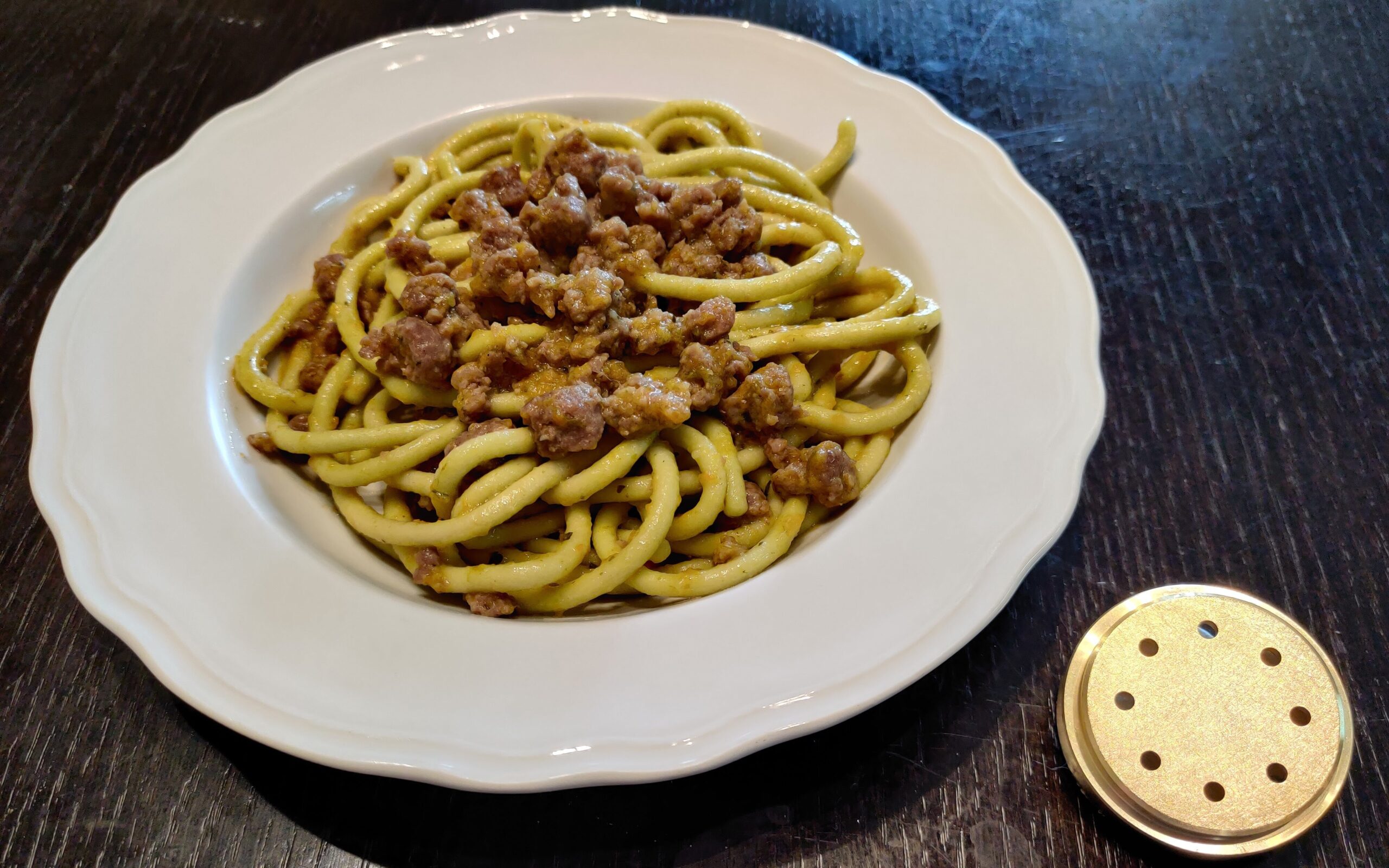
I realized this pasta with PASTAIO | Pasta Maker with the pici bronze extruder. With this type of die some additional care is required compared to the plastic ones, but the result is truly unique. For an optimal result, I recommend that you heat the extruder in hot water and mount it just before the extrusion begins. In this way it will already be at temperature and the pasta will be extruded perfectly from the beginning.
- NEW Version with DOUBLE Extrusion – Front or Vertical
- 12 extruders included to make up to 16 different types of pasta
Compatible with the new BRONZE dies (1 Bronze die INCLUDED) - Fresh Pasta in just 10 minutes.
- Up to 800g of pasta in a single cycle.
You can then buy the other bronze dies on the dedicated machine shop, including this pici one. Or, if you want to make bronze extruded pasta since the beginning, you can buy a more complete version directly on Amazon, which includes various bronze dies, among which there’s also the pici one.
Peas pici with white sausage ragout
Ingredients (pasta):
- 240 re-milled semolina
- 60 pea flour
- 105g water
- 5g oil
Ingredients (sauce):
- 400g sausage paste
- 150ml white wine
- 1 small onion
- 2 carrots
- 1 stalk of celery
- 2 Tsp of chopped parsley
- 2 Tbsp of oil
- 1 pinch of salt
Directions(pasta):
- First of all, heat some water in a bowl, so that it is very hot (around 60° C) and then immerse the pici die. In this way, when you use it it will already be hot and you will not have to discard too many pici at the beginning of the extrusion.
- Start preparing the pasta by pouring the flours into the basket of the Pasta Maker. For the moment, leave another front extrusion die mounted in the machine.
- Then put the lid on, select the “Pasta V” program and start it. From the holes in the lid, gradually add the water mixed with the oil.
- When the program is almost finished, lift the lid to stop it, drain the pici die and dry it well, then replace it with the one previously mounted.
- Then replace the lid and the machine will restart automatically. As soon as the dough starts to come out, it will probably not be perfect for the first 10-15 centimeters. Then cut this part away and put it back into the machine by lifting the lid and then closing it.
- When the pasta starts to come out evenly, form small baskets and cut to desired length. Continue like this until the end. In the event that the program stops before the end of the mix, make a Stop and then restart only the extrusion with the appropriate button.
- Let it dry for at least a couple of hours to obtain optimal cooking, even better if you cook the pasta the next day.
Directions(Peas pici with white sausage ragout):
- Heat a couple of tablespoons of oil and chopped onion, carrots, celery and parsley in a pan.
- When they are golden brown, add the sausage paste and chop it well with the help of a ladle. Brown well and then blend with the white wine and add a pinch of salt, if the sausage is not already very tasty.
- After a minute the alcohol will have evaporated and you can cover with a lid. Cook over low heat for 45 minutes, stirring occasionally. If you see that the sauce is drying too much, add a little hot water. The sauce must remain with a little broth so that it is not too dry when it is used as seasoning.
- Meanwhile, cook the pasta in boiling water for 4-5 minutes. When it is still quite al dente, drain and pour into the pan to toss with the sauce, adding a couple of tablespoons of cooking water if necessary.
